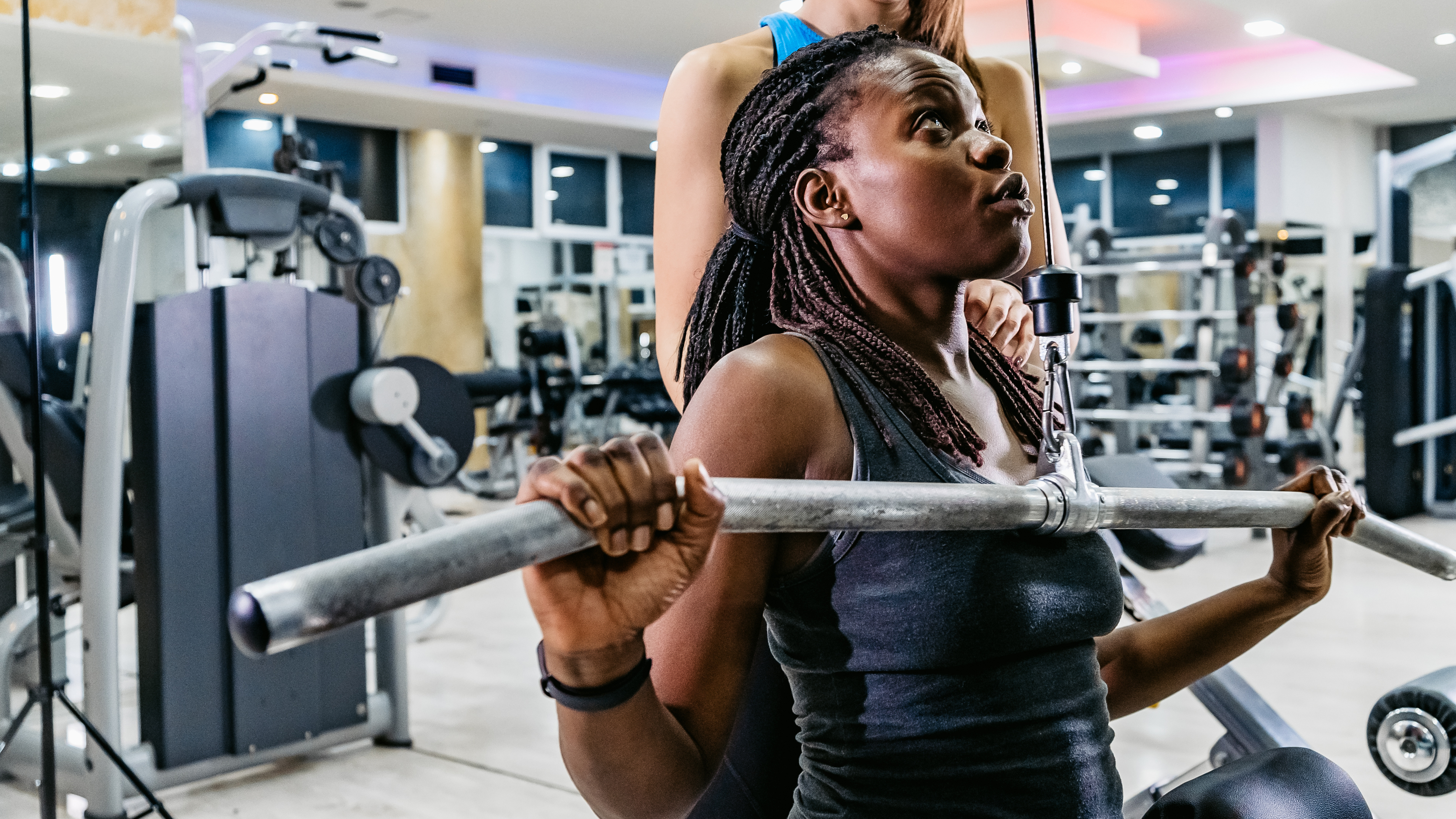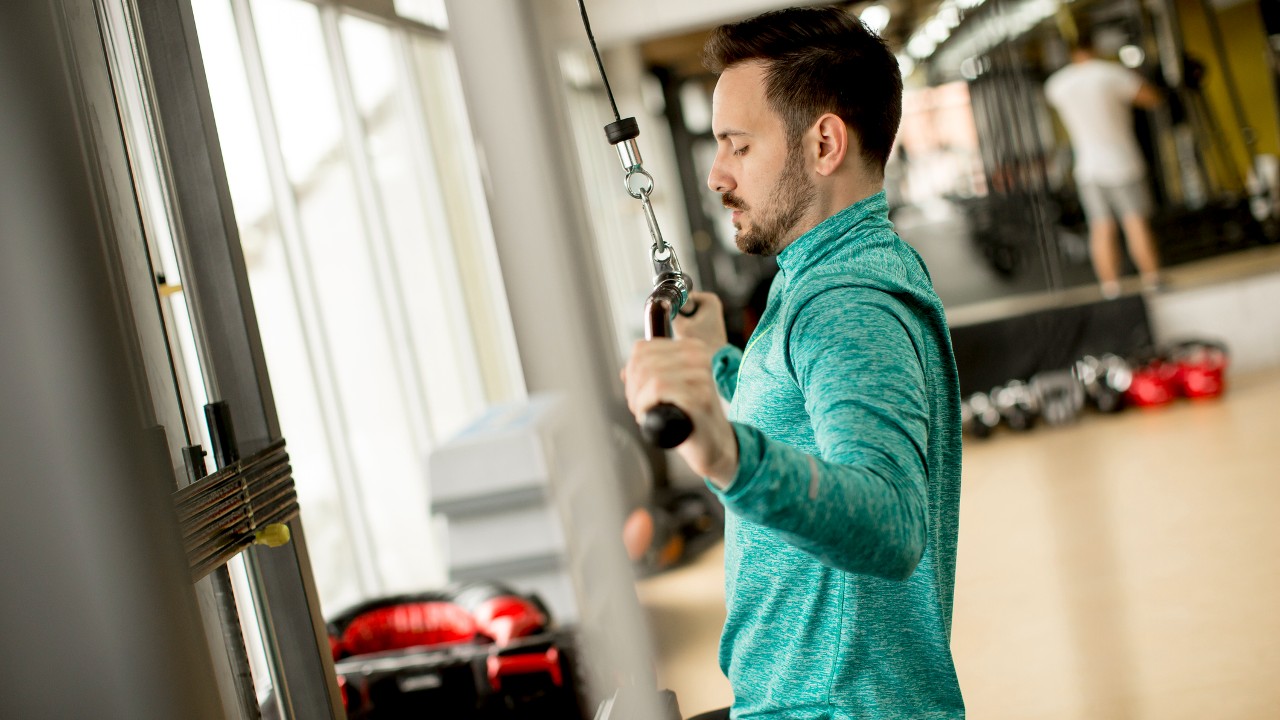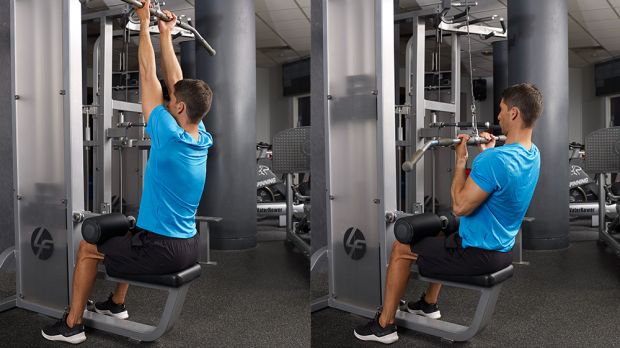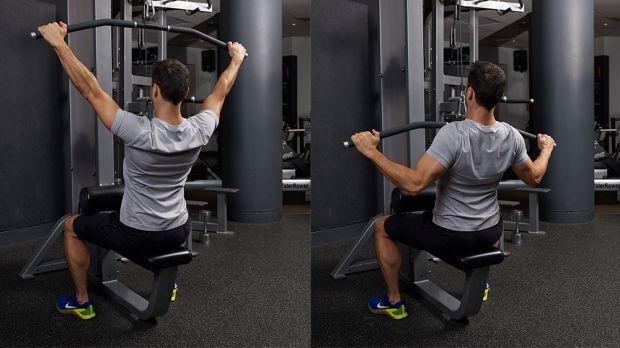Lat Pull-Down Form: How To Perform This Alternative To Pull-Ups
Develop good lat pull-down form when you hit the machines and build a broader back

The pull-up is a phenomenal exercise for building upper-body strength and muscle, but they’re hard—horrendously hard. So hard, in fact, that most people will tap out after just a couple of reps, long before they’ve had the desired effect of putting the muscles under enough tension to grow. They can be draining physically and demoralizing mentally.
This is when the lat pull-down machine comes into its own. It involves a similar movement to the pull-up, challenging your mid- and upper-back muscles, arms and grip, but you have more control over how much you lift—there’s no need to heave your entire bodyweight off the floor.
Additionally, you can slow the tempo right down to help increase muscle size rapidly.
As the name suggests, the lat pull-down targets the latissimus dorsi—the large, flat muscles across your mid back. Latissimus dorsi translates to “broadest of the back”, underlining why this is one of the best back exercises, and more specifically best upper-back exercises, that you can do.
A strong back is also vital for a strong chest, meaning the more you work on your lat pull-downs, the better equipped you’ll be to go big on the bench press.
That said, the lat pull-down is notorious for being poorly performed in most gyms. You’ll typically see someone leaning back and yanking the bar towards their chest, using their bodyweight to initiate the move. Not only does this mean the lats aren’t working properly, but also that they’re putting extra stress on their pelvis and lower back.
To help you avoid this fate, Coach spoke to fitness and nutrition coach Karl Bratland. A USA Weightlifting-certified trainer, Bratland will help you nail your form, explain how to swerve common lat pull-down pitfalls and arm you with the tools to broaden your wingspan.
Get the Coach Newsletter
Sign up for workout ideas, training advice, reviews of the latest gear and more.
Karl Bratland is a functional fitness and nutritional coach with an online fitness coaching business offering custom fitness and nutrition plans. He has a master’s degree in Exercise Science and several fitness certifications including a USA Weightlifting L1 and CrossFit Trainer.
How To Do The Lat Pull-Down
Most gyms will have a lat pull-down machine, featuring a seat, a pad that sits on top of your thighs (to stop you rising out of your seat), and a bar attached to a cable.
The Set-Up
To start, sit down and adjust the pad so that it sits comfortably but snugly against the top of your thighs.
“Grab the bar with your hands slightly wider than shoulder-width apart with a pronated grip, meaning your palms face away from you and knuckles point skywards,” says Bratland. “Next, retract your shoulder blades to engage your upper-back muscles.”
If you’ve never been asked to retract your shoulder blades before and aren’t sure what that means, think about moving them back and down, like you’re trying to move them towards your back pockets on a pair of jeans.
The Pull
“From this position, pull the bar down to your chest, trying to keep your back fairly straight,” says Bratland. “You can lean back a little bit, but don’t use momentum by swinging your back towards the ground to help bring the weight down.”
Bratland says he likes to focus on trying to pull with his elbows, using the lats to bring the bar to his chest rather than swinging his torso to generate momentum. “Instead of momentum, you should really be focusing on activating your upper-back muscles,” he says.
The Return
Once you’ve pulled the bar down until it is a couple of inches from the middle of your chest, squeeze your upper-back muscles hard to activate them as much as possible, then return the bar to the start position under control.
The slower this eccentric part of the lift, the greater the activation of the muscles and the more they will grow.
Common Lat Pull-Down Mistakes
Leaning Too Far Back
We’ve seen people near-horizontal at the bottom of lat pull-down reps as they lean back to drag the bar downwards. Suffice to say, this is sub-optimal. “You definitely don’t want to be horizontal,” says Bratland. “You want to be more vertical, only leaning back a little bit to get the bar to your chest—maybe 10-20° at most.”
Using Momentum
You want your lats and biceps to be responsible for moving the weight. The more you swing your body or jerk the bar to get the exercise started, the less emphasis is placed on these muscles. If you find yourself picking up this bad habit, reduce the weight slightly and focus on controlling the entire movement from start to finish.
Lat Pull-Down Benefits

Which muscles does the lat pull-down work?
We’ve already established that lat pull-downs are a great back-builder, particularly if you’re still working on your pull-ups (more on that below), but the benefits don’t stop there.
“The lat pull-down works pretty much the entire mid and upper back region,” says Bratland. It will target the traps a little too, but the major muscles involved are the lats, rhomboids and, because you’re bending at the elbow to complete each rep, the biceps.
Do lat pull-downs help with pull-ups?
With both moves, the shoulder joint is working through a similar range of motion under load, and the working muscles are the same too, so it checks out that lat pull-downs can raise your pull-up game.
“If you have access to a lat pull-down machine, it can definitely aid progression for pull-ups,” says Bratland. It’s almost the same movement pattern, but instead of moving your body like you do with a pull-up, you move the weight via the machine’s pulley system.
“The good thing about lat pull-downs is you can set the load to less than your bodyweight, which you can’t do with a pull-up without using resistance bands,” says Bratland. “As you get stronger and progress your lat pull-downs, you might then be able to try assisted pull-ups and then full pull-ups.”
Lat Pull-Down Variations
How does grip position impact lat pull-downs?
You might have seen some broad-backed individuals at your gym mixing up their grip position during lat pull-downs, with narrow grip, neutral grip and supinated grip all popular alternatives. How can this help?
“Using a closer grip or a wider grip will change the angle of the exercise, adjusting how it hits the muscle,” explains Bratland. “With a supinated lat pull-down, where you’re in a chin-up position with your palms facing you, you’ll target the biceps a little bit more. If you’re short on time, that can be a good option for hitting the lats and biceps at the same time.”
Nevertheless, Bratland says, the main reason for switching up your grip is to hit your muscles from different angles to encourage them to get bigger and stronger, just like you would when using the bench press to target the chest.
Underhand lat pull-down

Switch your grip on the bar so you’re holding it with your palms facing you and your hands shoulder-width apart. By changing to an underhand grip you recruit your biceps to help with the movement, which has the added benefit of taking some of the load off your lats if they are tiring towards the end of a back workout. Holding the bar with that underhand grip, pull it down to below chin height, keeping your chest up throughout. Pause at the bottom of the movement, then take the bar back up under control.
Wide-grip lat pull-down

The wider your grip, the more the lats have to work during the exercise. Your grip should be fairly wide even with the standard version of the lat pull-down, but with this variation you take your hands right to the ends of the bar. Other than that, the form is the same as the standard lat pull-down. Pull the bar down to your upper chest, pause for a beat while squeezing your lats, then take the bar back up under control.
Unilateral lat pull-down
This single-arm variation works each side of your body individually, which is a great way to ensure that a stronger side isn’t doing all of the heavy lifting (or in this case, pulling) as with the standard exercise. Replace the bar on the machine with a handle and hold it with your palm facing away from you. Turn your palm to face you as you pull the handle down, before slowly returning to the starting position. Do all the reps on one arm, then switch to the other.
Straight-arm pull-down
It can be hard to avoid over-using your arm muscles with the standard pull-down, so to make sure you’re really focusing on the lats, try the straight-arm version. Stand up for this exercise and hold the bar over you with your arms straight and angled forwards 15-20°. Pull the bar down to your thighs, keeping your arms straight, then slowly bring it back up.
Close-grip lat pull-down to triceps press-down
You shouldn’t be feeling the burn in your triceps with a standard pull-down – if you are, it means you’re not engaging the lats as you should be. This variation of the move, however, does hit the upper arms hard. Kneel facing the machine with your body upright. Hold a short bar above your head with an overhand grip, palms facing forwards. Pull the bar down by bringing your elbows in to your sides. Then press the bar down, keeping your elbows by your sides. Reverse the movement to return to the starting position.

Sam Rider is an experienced freelance journalist, specialising in health, fitness and wellness. For over a decade he's reported on Olympic Games, CrossFit Games and World Cups, and quizzed luminaries of elite sport, nutrition and strength and conditioning. Sam is also a REPS level 3 qualified personal trainer, online coach and founder of Your Daily Fix. Sam is also Coach’s designated reviewer of massage guns and fitness mirrors.
- Harry BullmoreStaff writer









